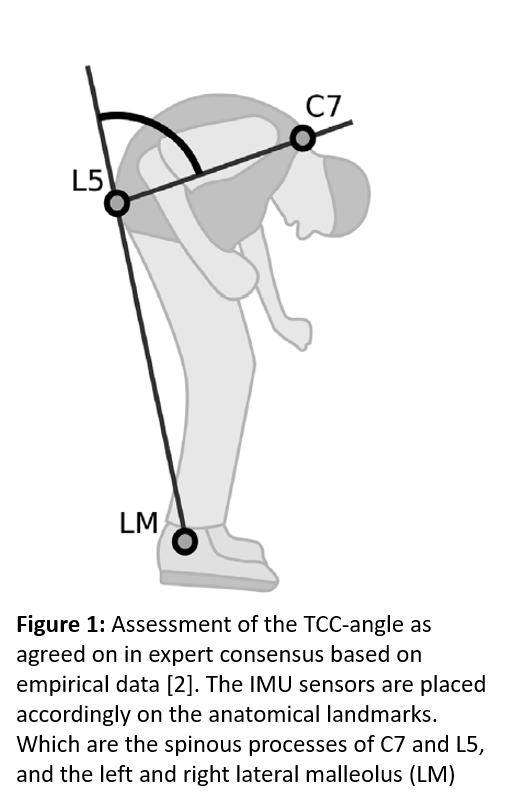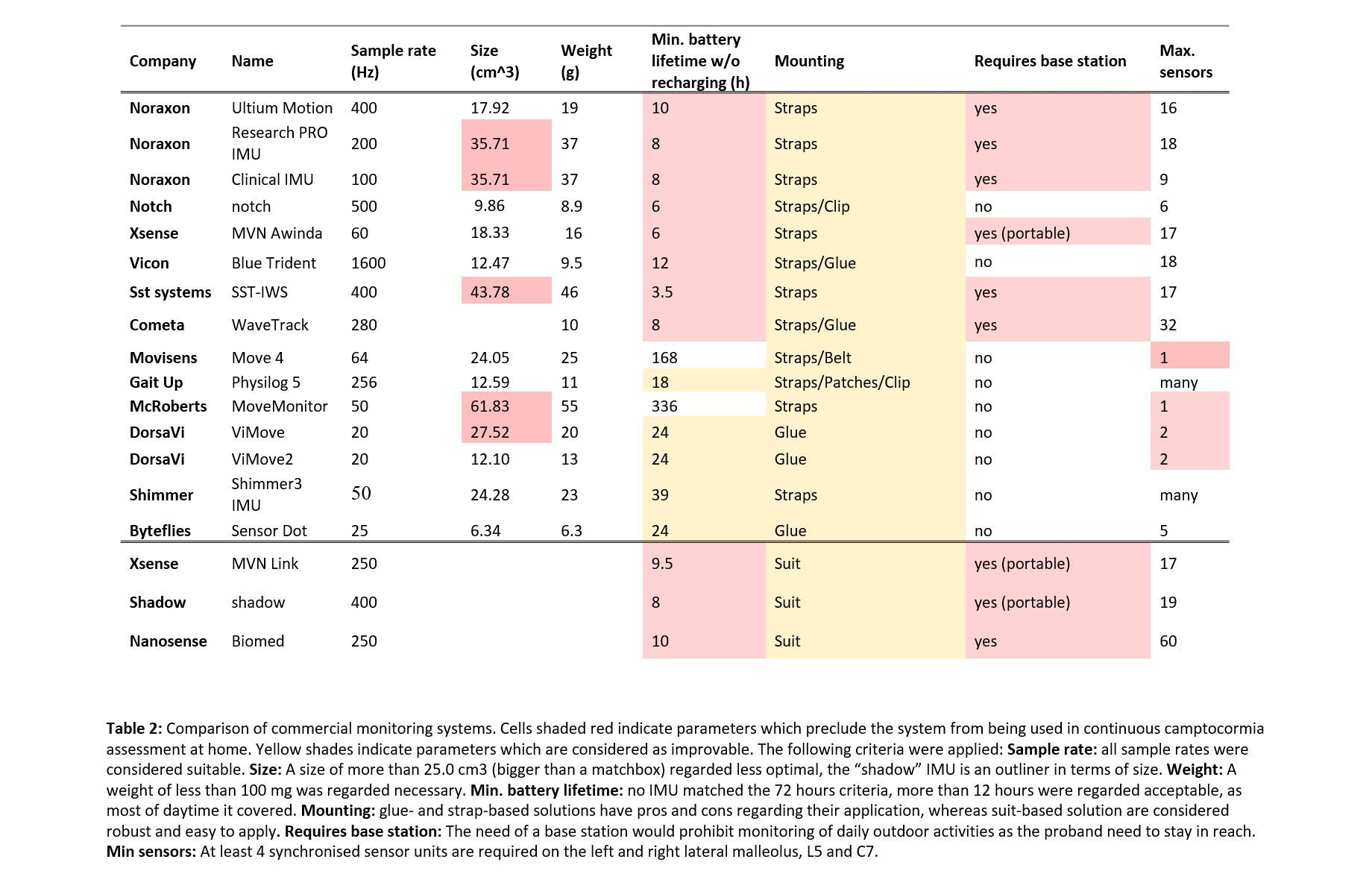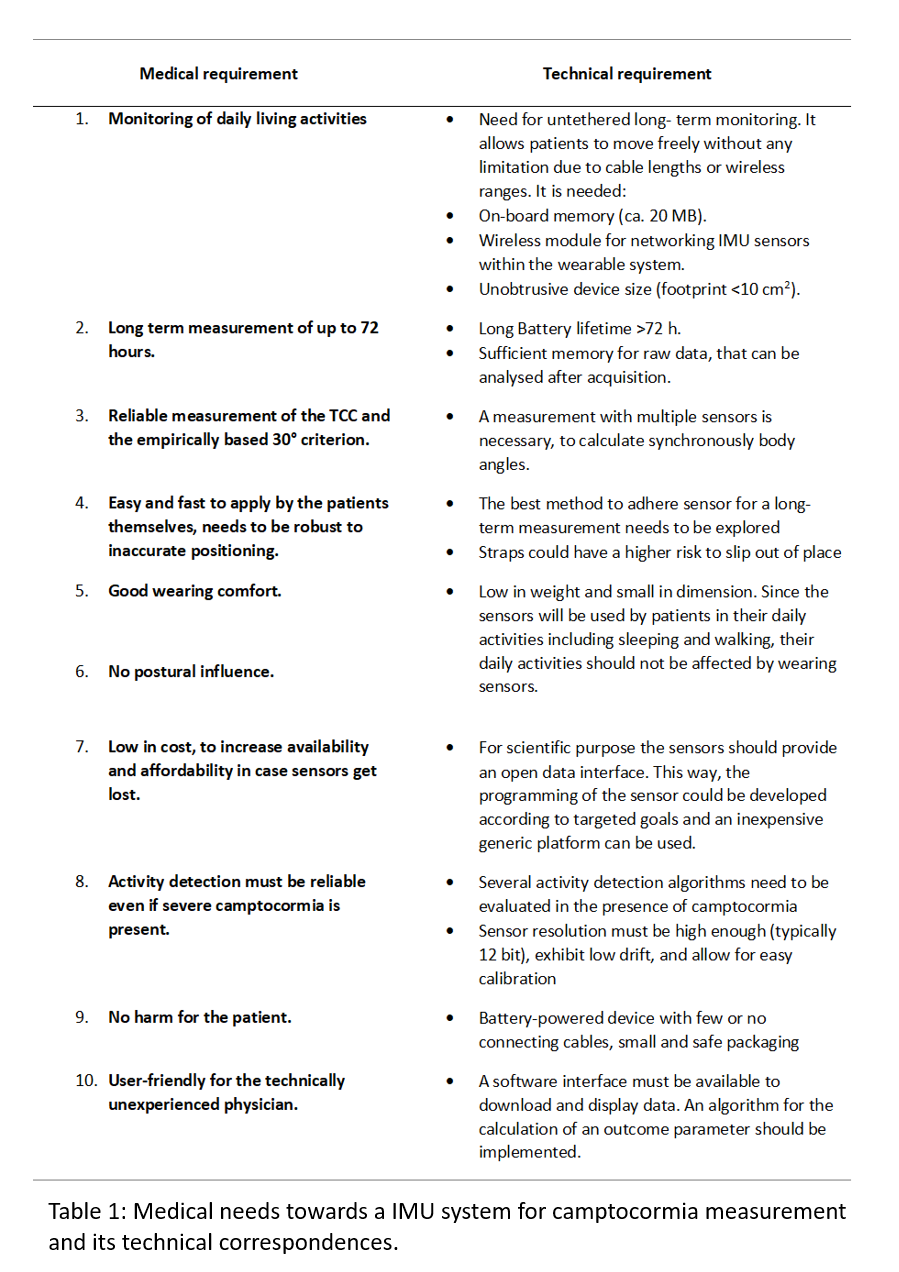Category: Parkinson's Disease: Non-Motor Symptoms
Objective: This conception aims to outline the medical and technical requirements and a possible setup for an inertial-measurement-unit (IMU) quantifying camptocormia over a longer period in a home-based assessment. The extent of camptocormia is sometimes difficult to be defined validly during the brief contact in the outpatient clinic for various reasons, but a precise angle assessment is especially for future therapy studies essential. A pilot-study at Kiel University has been launched.
Background: Camptocormia is defined as a pathological not fixed trunk bending of more than 30 degrees based on the Total-Camptocormia-Angle (TCC-angle) [1]. Camptocormia can occur in the context of several neurological diseases and is frequently encountered in Parkinson’s disease [2]. Existing IMU-systems have not been systematically evaluated regarding their suitability for specific clinical requirements including axial-postural disorders.
Method: In cooperation with engineers from Kiel University commercially available IMU systems were technically evaluated based on a list of defined medical requirements for assessing camptocormia in a home-based assessment [3].
Results: The principal medical and technical requirements for an IMU in camptocormia angle long-term measurement are listed in Table 1. An overview and evaluation of commercially available IMU systems is given in Table 2. The conception of TCC-angle assessment using IMUs is illustrated in Figure 1.
Conclusion: Existing solutions for IMU-based joint position tracking exhibit angular resolution and measurement accuracy (±2 degree) equivalent or better than what is available by conventional photo analysis. Whilst some systems offer wireless data streaming to a base station, on-sensor storage of data appears more convenient for simple assessment at a patient’s home. Currently, continuous monitoring of 72h and longer was regarded technically challenging. A superior method to keep the sensors in place could not be identified yet. According to Table 2 the GaitUp, Shimmer and Byteflies systems meet most of the medical and technical needs. GaitUp qualifies for further evaluation as it promises very direct hardware programming and access. A pilot study using commercial IMUs for camptocormia assessment at home is currently implemented at Kiel University. Results and recommendations for technical improvements will be available at the congress.
References: [1] Margraf, Nils G.; Wolke, Robin; Granert, Oliver; Berardelli, Alfredo; Bloem, Bastian R.; Djaldetti, Ruth et al. (2018): Consensus for the measurement of the camptocormia angle in the standing patient. In: Parkinsonism & related disorders 52, S. 1–5. DOI: 10.1016/j.parkreldis.2018.06.013. [2] Margraf, N. G.; Wrede, A.; Deuschl, G.; Schulz-Schaeffer, W. J. (2016): Pathophysiological Concepts and Treatment of Camptocormia. In: Journal of Parkinson’s disease 6 (3), S. 485–501. DOI: 10.3233/JPD-160836. [3] H. Wolframm, N. G. Margraf, G. Deuschl, R. Wolke and R. Rieger, “Measurement of camptocormia trunk flexion using a dual-sensor measurement setup,” 2019 41st Annual International Conference of the IEEE Engineering in Medicine and Biology Society (EMBC), Berlin, Germany, 2019, pp. 3275-3278, doi: 10.1109/EMBC.2019.8857212.
To cite this abstract in AMA style:
R. Wolke, K. Naderi Beni, H. Wolframm, R. Rieger, N. Margraf. Conception of a sensor- and home-based measurement of camptocormia [abstract]. Mov Disord. 2021; 36 (suppl 1). https://www.mdsabstracts.org/abstract/conception-of-a-sensor-and-home-based-measurement-of-camptocormia/. Accessed October 16, 2025.« Back to MDS Virtual Congress 2021
MDS Abstracts - https://www.mdsabstracts.org/abstract/conception-of-a-sensor-and-home-based-measurement-of-camptocormia/



